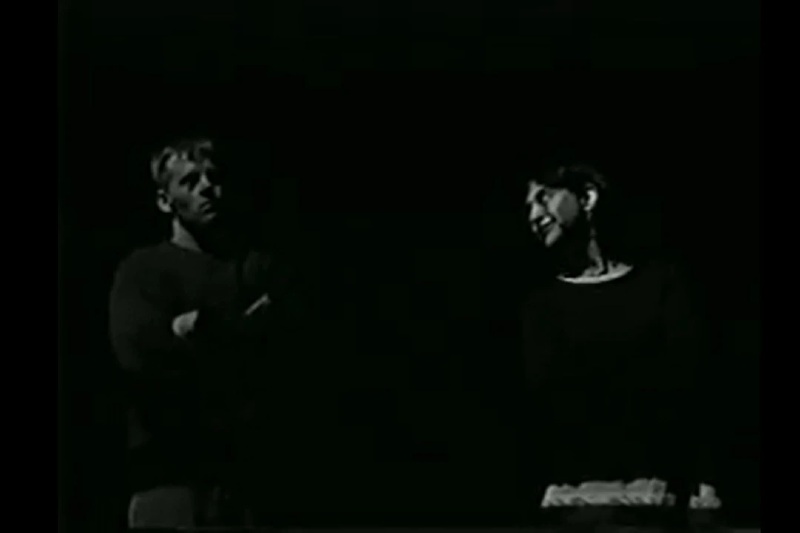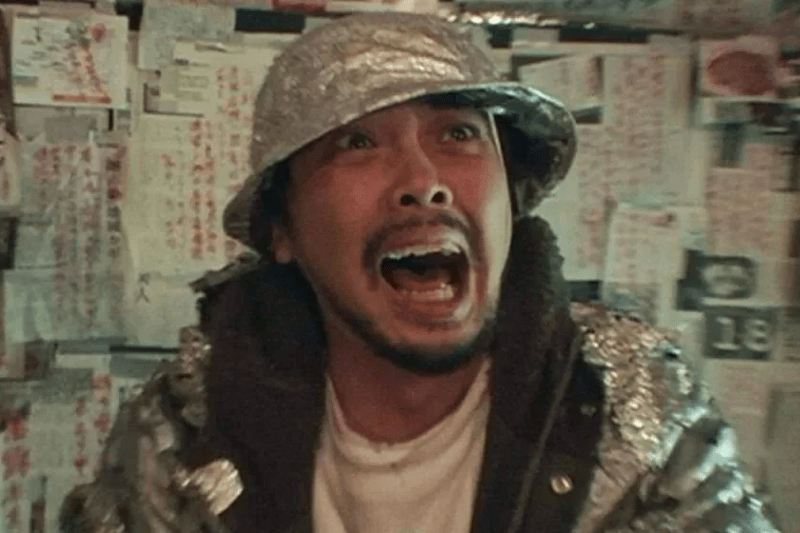As so often happens in Hollywood, producers learned the wrong lessons from Daniel Myrick and Eduardo Sánchez's The Blair Witch Project. They learned it was fast to shoot. They learned it required minimal crew. Most of all, they learned it was cheap. For more than a decade, horror fans were subject to a barrage of disposable found footage films. And most of these titles missed the thing that keeps The Blair Witch Project fresh. Never seeing the monster—but feeling its presence like the ticking of a time bomb—pushes the audience to new heights of stress. Rarely is a man in a mask as terrifying as the unknown.
One of the few films that took this lesson to heart is Josh Criss' Leaving D.C. In his debut feature, Criss expands on this concept, departing from his predecessors in new and interesting ways. Consider that The Blair Witch Project is a film designed to highlight a director. This can be seen in both a literal sense—as the character of Heather serves as director of her documentary—but it also can be seen in the structure of the film. Heather chooses the shots. She chooses what and when to film. The edits are either incidental, or imposed by those presenting the footage. Despite the mimics who blindly copied this aspect, she is simply acting in-character—and in her own best interest—as she continues to record.
Leaving D.C., on the other hand, is a film centered on an editor. Our protagonist, Mark, carefully curates his footage for his in-universe audience. The film—our film—drives this home with long and unbroken shots of the editing software he uses to review evidence. He, too, is continuing to film and continuing to edit his film for definite and in-character reasons: to stay in touch with his OCD support group after moving to West Virginia. First to impress them, then to justify himself, then finally to serve as his last connection to the outside world.
Escaping the noise and congestion of Washington, D.C. for the rural life, Mark opens his recording with the drive to his new home. "I can't wait to show you my new house,” he tells the camera. “My new haunted house." He's more right than he knows. Reporting to his OCD support group via pre-recorded videos, his life soon descends into preternatural chaos. He finds a cat skull nailed to a tree, strange people stalk outside his house, women beg for mercy, and something might be inside his home.
Sensing both the need to fill the time between spooky segments and keep the cost down by showing fewer scares, many other studio-made found footage films pad their runtimes with extraneous content. We expect to see weak character beats that rarely connect to the story; needless drama between undercooked characters, or mundane sequences meant to sell you on the fact this "really" is found footage.
Leaving D.C. dodges each of these cliches. With Mark's desire to impress or his outright fear, he cuts his footage to the quick. If Mark doesn't care, the audience probably doesn't either. There is a world where Mark’s eighteen hour cleaning sessions made it into the film. There is also a world where his clash with another support group member is shown in full instead of being hinted at in the gap between cuts. It would be right at home alongside the Paranormal Activity movies, and it would be a far worse film for it.
Instead, Criss takes another route. The majority of found footage films are conventional films shot to suggest there is an in-universe cameraman. The best of this genre, however, present films that could not be shot in any other way. Leaving D.C. could not present its unreliable narrator in another fashion, and certainly not with the same degree of subtlety.
Claire’s visit brings this to light. She is a member of the OCD support group who visits for the weekend and the subject of Mark’s romantic fixation. From the moment she arrives, he is overbearing. He films her arrival despite her wishes, tries to hug her on camera, and records her bedtime routine with uncomfortable narration. "The lovely but tired Claire insisting on her own room,” he says, “even in my haunted house." All the while, he promises this footage is something he will keep to himself.
Soon they are awakened by strange sounds in the forest, and Claire panics, desperate to escape. Mark tells her to stay. When we see her next, she is sacked out on top of her bed—on top of her sheets—as though she has just been dumped there. She is still wearing her shoes. Mark narrates as he stands over her, "Well, it took two valium, but Claire finally got to sleep,” he states. “Apparently realizing the foolishness of driving away from here in the middle of the night. I agree, it was very strange and very creepy but we shouldn't let it ruin everything."
We know Mark will go out of his way to present an idealized version of himself to the camera. Did he do the same here? Did he drug her? These questions create intrigue, and invite us to look for other inconsistencies. And while there are many problems with his story, one of the central contradictions is tied into his editing.
If you aren't paying attention to his timestamps, you would never suspect there was a gap, let alone one nearly two weeks long. On 8/25/2012, he finds the previously mentioned cat skull nailed to a tree, and someone lurks nearby in the woods. Mark shows off how he’s going to sleep that night (making it the third distinct filming on that day). We next see him shocked awake by terrifying sounds outside at 4:23AM. You would expect it is the same night following, but it is now 9/3/2012.
Mark lies to cover this up, smoothing over his story. In footage from 9/3, he says this day is the first time he has recorded multiple logs in one day. This seems to further imply the events of 8/25 and 9/3 are continuous, when, of course, they are anything but. Did Mark stage the physically possible events to scare Claire into his arms, until something very real in the forest took its revenge?
Herein lies the most important lesson Hollywood missed, one understood by the top examples in this first-person subgenre. At its foundation, a found footage film could only ever be a found footage film. There must be a reason for a character to serve as our point-of-view. Their service in that aspect must reveal something about them, which in turn presents intrigue and chills unique to that character. In the case of The Blair Witch Project, that’s Heather’s increasing instability as both director and camerawoman. In Leaving D.C., Mark uses editing to facilitate being an unreliable narrator and to obscure the truth from his audience.
Leaving D.C. thoughtfully uses the medium to the hilt, and learns from the best of the found footage genre, to create a film that could only ever be shot in that style. The narrator being a character with his own concealed goals draws the audience deeper into the narrative, inviting them to peel back the layers of his footage. And unlike some found footage films, this balance of intrigue and the unknown inspires us to consider the mystery long after the movie has ended.







